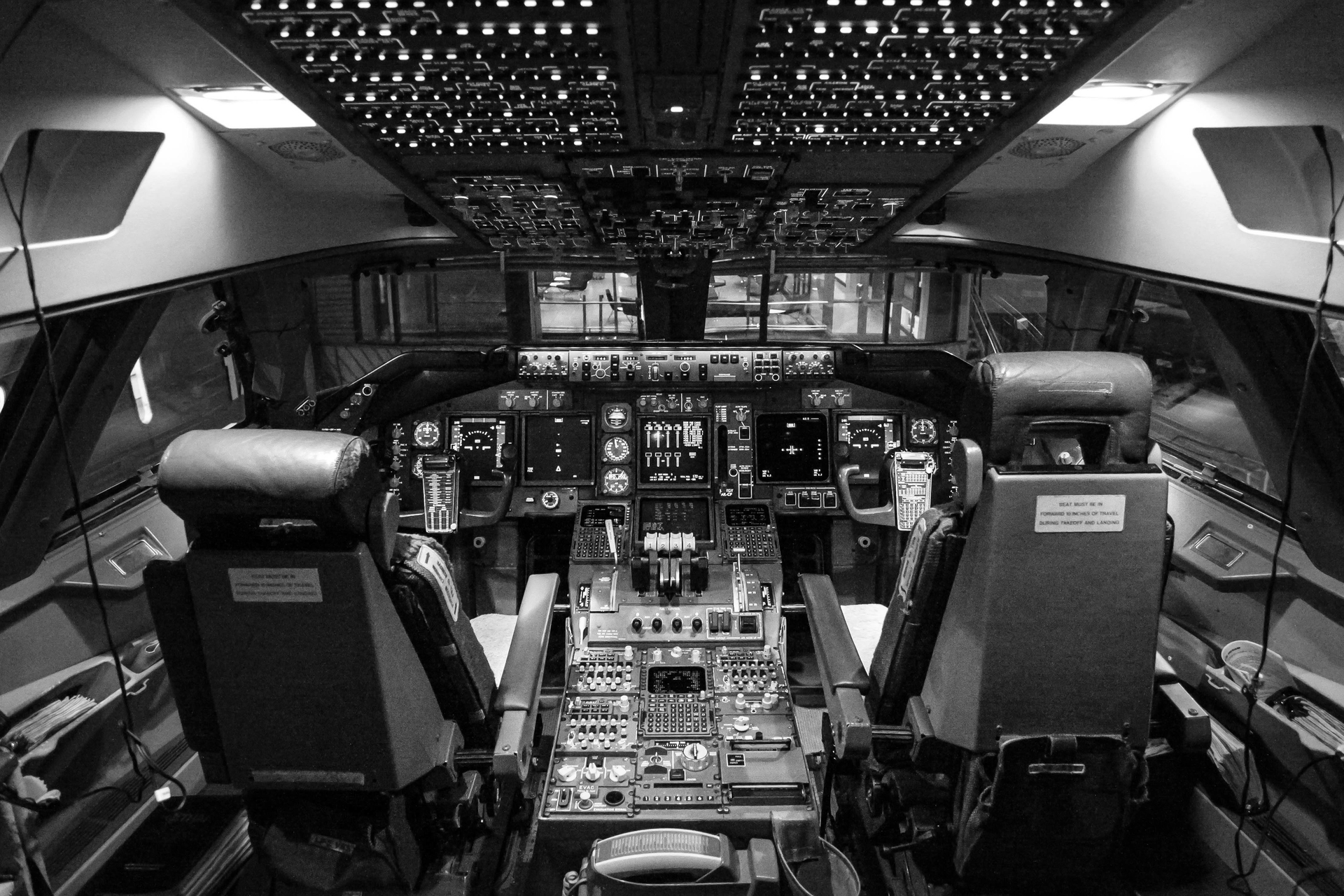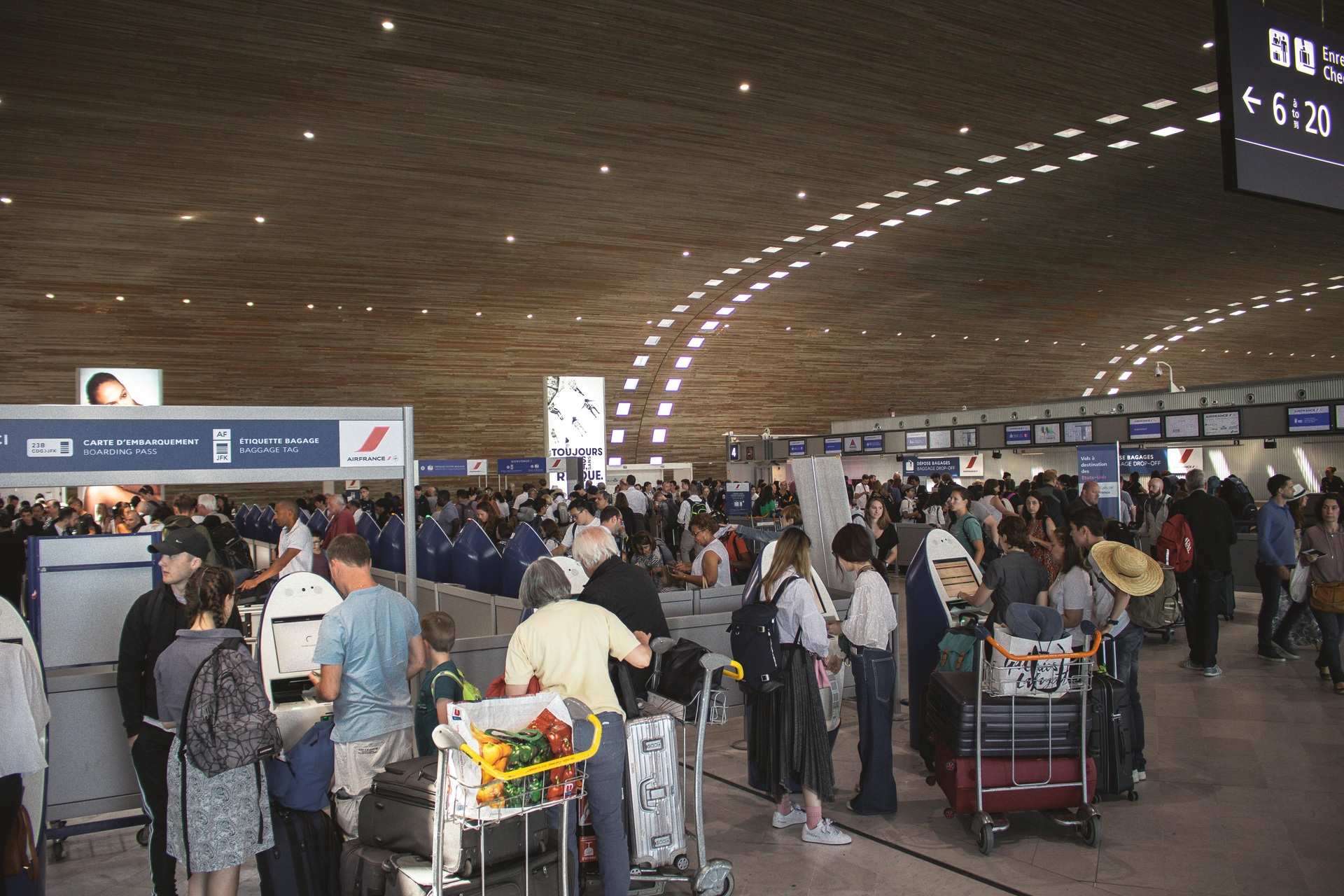
AeroGenie — Your Intelligent Copilot.
Understanding Aerospace Manufacturing Cost Models and How Manufacturers Can Reduce Costs With AI
July 31, 2025
Aerospace manufacturing is costlier than ever. Here’s how AI is helping manufacturers cut waste, improve margins, and head off market disruptions.
What are aerospace manufacturing cost models?
Aerospace manufacturing cost models are frameworks to manage the costs of producing aircraft components and avionics systems.
These models include fixed costs like tooling and capital expenditures, variable costs such as labor and materials, and indirect costs like quality assurance, logistics, and compliance.
As modern aircraft become more complex, aviation companies must account for an ever-broadening range of variables.
Well-executed, these models empower OEMs to deliver high-precision parts under tight regulatory scrutiny while keeping costs in check. Manufacturers in both defense and commercial sectors rely on accurate modeling for financial survival.
Today, cost models are under more strain than ever. As Aviation Week reports, long-term contracts can offer greater cost predictability. However, growing volatility in supply chains—including tariffs, labor, and other geo-political disruptors—is forcing manufacturers to regularly revisit pricing assumptions.
The pressure is building: Why costs are surging
Costs in aerospace manufacturing are rising sharply. JetBlue, for instance, recently announced it will park aircraft, reduce flights, and reevaluate leadership structure after determining it’s “unlikely” to break even in 2025.
Softening travel demand, increasingly rigorous engine inspections, and economic uncertainty are major drivers for the company’s gloomy outlook, and JetBlue is not alone in operating in the red.
Spirit AeroSystems is undergoing a major shakeup after facing a run of financial struggles. Boeing is buying back Spirit AeroSystems for $4.7 billion in a reacquisition deal that includes transferring key assets to Airbus. Quality control failures like the 737 MAX 9 door blowout in 2024, pandemic-era production chaos, and years of mounting financial strain drove this unusual purchase arrangement.
The broader, underlying truth is OEMs and suppliers are being squeezed out. Both must rethink their entire approach to cost modeling or risk taking hits from both ends, higher material prices and lower customer tolerance for delays or defects.
When safety upends cost models
Recent news headlines only heighten market and regulatory scrutiny. Many consumers, advocates, and government agencies are leery of new AI technology used in aircraft parts and production. The year has been punctuated by fatal air incidents like American Airlines’ midair collision with a military helicopter in Washington D.C. killing 67 passengers in January 2025, and Air India’s Boeing 787 flight that crashed shortly after takeoff, killing 270 passengers and 29 bystanders on the ground in June 2025.
Although air travel remains overwhelmingly safe, government surveillance is increasing. The FAA, accused of being too lax and “hands off,” has stepped up its oversight of Boeing. The FAA has conducted an unprecedented number of Boeing audits, and its “tougher” oversight will “continue indefinitely”.
Each new inspection mandate, while critical for safety, introduces production slowdowns, rework cycles, and compliance costs. Traditional cost models weren’t built to factor in labor droughts, production errors like door panels falling off mid-flight, or unceasing regulatory heat.
Boeing spent more than $4 billion in one quarter alone to address safety issues, costs that its customers are unwilling to absorb. Airlines like Ryanair, Delta, and Southwest have publicly resisted Boeing’s attempts to pass on higher costs—from safety reworks and regulatory delays—yet airlines are dependent on the manufacturer for future fleet growth as other OEMs aren’t positioned to fill the demand void.
While Boeing will eat some of these costs, so too will the airlines, boxed into a limited OEM ecosystem. Longer-term price escalators will likely be baked into future contracts with more creative financing terms.
How to manage the unexpected costs of safety fallout
This is where predictive systems can actually move the needle. GE Aerospace reports that predictive maintenance detects engine issues up to 60% earlier and reduces unscheduled removals by one-third. These capabilities, along with SmartSignal analytics that can save millions per alert, give manufacturers and their B2B partners the foresight to model inspection mandates and other cost-driving disruptions before they hit.
AI forecasting also helps planners simulate cost impacts from labor shortages, rework cycles, and regulatory delays. In the narrow-margin aviation industry, cost-model visibility like this helps companies stay operational when conditions turn volatile.
The complexity of modern aerospace supply chains
Our current aerospace supply chain is a bit of a mess; it must adhere to multiple international regulatory bodies that are strengthening oversight.
Airbus’s hyper-global operations show us just how complex the aviation market is. The OEM relies on over 8,000 direct suppliers (or 18,000 with sub-tier layers) across 90 countries, a titanic network yet smaller than Boeing’s broader network of 20,000+. One aircraft alone may require millions of parts from thousands of companies across 30 countries. OEMs, airliners, and passengers are all dependent on a global web of suppliers and sub-suppliers to safely and cost-efficiently deliver.
This fragmentation complicates cost modeling. Each supplier site comes with its own labor costs, productivity levels, and risk factors, and then a carrier must multiply that by 8,000. Current geopolitical disruptions like tariffs and trade tensions only compound these vulnerabilities.
Airbus, which has avoided Boeing’s safety woes, notes that they have struggled to meet these rising expenses, with many cost increases related to inflation and energy prices. Thus, in a move to hedge off increasing volatility, Airbus has secured long-term contracts with less than ideal terms.
Legacy cost models, built on predictable assumptions that have largely become obsolete, are failing. Our current presidential administration’s scattered and protectionist tariff policies are adding gasoline to the fire.
Manufacturers are struggling to cope with political yo-yoing. Those with foresight are using real-time data, scenario planning, and AI-driven forecasting to account for constant shifts in supplier health, lead times, and material and labor availability. While these forecasts aren’t perfect, they are infinitely superior to projections hacked together from disparate and dated data sources.
AI can fill the gaps in traditional cost models
Traditional cost models rely heavily on historical records over real-time data, human assumptions over hard facts, and siloed department reports over integrated systems—clearly insufficient for today’s challenges.
AI-powered aviation tools like ePlaneAI can aggregate live data streams from ERP systems, suppliers, logistics platforms, product lines, and even political sentiment. Using natural language processing (NLP), advanced systems can read real-time geopolitical risk signals coming from news headlines, government briefings, trade policy updates, and more. These systems can then tag and classify sentiment or threat level, and simulate how it would affect cost of goods sold (COGS), lead times, supplier availability, required inventory buffers, inspection delays, and more.
Thus, AI systems allow manufacturers to:
- Model the ROI of design changes.
- Recommend buffering inventory or delaying certain builds.
- Estimate true cost-to-deliver across different facilities.
- Dynamically adjust for raw material cost changes.
- Update per-unit pricing forecasts and adjust customer contract terms.
- Simulate and predict the impact of changing tariff scenarios.
- Flag supplier alternatives and model the cost impacts.
- Predict supply-chain bottlenecks and lead time fluctuations.
As IBM notes in its guidebook AI for the Supply Chains, predictive algorithms are critical to preventing full-scale operational stoppages, allowing procurement teams enough lead time to reroute, renegotiate, or even 3D print alternatives.
Furthermore, IATA research shows that digital twin technology and machine learning can simulate production at scale. Instead of relying on “best guess” estimates, manufacturers can test how cost inputs play out in a virtual environment without needing to purchase or redeploy resources.
AI in action: How top aerospace players are responding
Artificial intelligence is being deployed wide-scale by aviation leaders, successfully trimming costs and speeding up disruption response times.
Airbus has embedded predictive analytics and digital modeling into its production workflows, primarily to address risk in supply delays, quality control, and workforce allocation. These tools have helped Airbus to adapt dynamically to supply chain pressure points instead of waiting for quarterly reviews to identify cost overruns.
JetBlue is another example of a company responding to financial pressure with real-time, data-backed decisions. Along with parking planes and trimming routes, the carrier is deferring the delivery of 44 new Airbus carriers, worth $3 billion, between 2025 and 2029. Additionally, JetBlue has indefinitely suspended the retrofitting of several older planes.
Insights for these shrewd, cost-cutting moves would not have been possible without scenario modeling and optimization tools powered by AI software.
And Boeing, in its absorption of Spirit AeroSystems while navigating production issues, further underscores the importance of artificial intelligence. Their 2024 Annual Report reveals that increased inventory costs and supply chain disruptions have significantly harmed margins for their commercial airplane customer base. Predictive AI tools are essential to detecting and managing this type of complex financial exposure going forward.
Why AI adoption remains slow, and how to fix it
Despite its proven benefits, AI adoption in aerospace manufacturing has been slow. Several factors explain the industry’s lag:
- Legacy infrastructure: Many manufacturers still operate on outdated ERP systems not built for AI integration.
- Data silos: Departments commonly hoard data or use incompatible systems, making it hard for AI tools to connect and gain a holistic picture.
- Cultural resistance: There’s hesitancy around automating decisions that have traditionally relied on human expertise.
- Market resistance: Customer confidence is not fully won and stakeholders are thus skeptical of AI’s ROI.
Nonetheless, companies that delay modernization face a growing existential threat. Lufthansa Group’s 2024 annual report highlights the cost inefficiencies of unscheduled maintenance and reactive logistics. These costs only compound without predictive models to forecast disruptions and optimize inventory across MRO networks.
For organizations getting started, IBM recommends beginning with a pilot program that can show early ROI. In their experience, a small investment in AI-powered cost modeling, such as analyzing the top 20 cost centers across your supply chain, can produce clear wins and build early leadership buy-in.
OEMs are restructuring to regain control
The strategic restructuring of major carrier supply chains, like Boeing and Airbus, is a prime 2025 trend shaping manufacturing cost models.
Notably, Airbus has absorbed several Spirit AeroSystems facilities, including plants in Kansas, North Carolina, France, and Morocco, in move to regain vertical control and de-risk the production of A220 and A350 programs, along with other critical components.
While the headlines focus on acquisition and ownership, the subtext is cost and risk. Airbus is bringing high-value work packages in-house to cut down on supplier delays and quality lapses, two core issues that drive up rework costs and trigger schedule penalties.
This move mirrors Boeing’s earlier decision to bring more work in-house following cost blowouts from outsourced production during the 787 Dreamliner program. The company’s 2024 annual report reveals that inventory (including unfinished goods) grew due to supplier shortfalls, highlighting the limits of cost models that rely too heavily on outsourcing.
In sum, OEMs are vertically reintegrating with help from AI-powered production models. Manufacturers are leveraging artificial intelligence to get ahead of unexpected subcontractor failures and better forecast costs across global programs.
Real-time data makes or breaks profitability
No one can blindly improve their bottom line, thus real-time data is at the heart of any successful aerospace manufacturing cost strategy.
Data from the Federal Reserve on unit labor costs for aerospace product and parts manufacturing shows a rebound in output post-2023. Real output, however, still lags behind pre-pandemic growth trends.
The industry’s sluggish recovery reflects slowdowns that could be mitigated with better forecasting and real-time feedback loops. AI tools shine here, capable of digesting high-frequency data to continuously monitor performance and accurately predict downstream production skids before they become missed delivery milestones.
The International Air Transport (IATA) 2022 AHM whitepaper outlines how airlines and MROs using AI-supported predictive maintenance are winning on multiple fronts. These companies are reducing unexpected parts failures, streamlining parts procurement, and optimizing technician labor. These feats are critical, as unscheduled downtime costs the industry billions each year.
Labor shortages and inspection bottlenecks
Cost models often assume labor is stable and scalable, but 2025 has shown just how flawed that assumption can be. JetBlue’s parked aircraft are due, in part, to labor shortages as well as market pressures.
This shortage in the MRO workforce is delaying critical engine inspections of planes with Pratt & Whitney GTF engines. Fewer inspectors mean higher inspection costs and longer wait times.
JetBlue’s experience reflects a broader truth: Market demand for your service doesn’t guarantee strong financial results. Frustratingly, labor workforce shortages and slow inspection workflows can cripple otherwise robust operations.
Traditional cost models fail to account for this type of cascading labor-related inefficiency, but AI tools can predict and minimize the impact of these setbacks. AI-powered systems can optimize maintenance schedules, dynamically model labor hours, and signal potential delays based on real-time flight and maintenance activity.
Final approach: Future-proofing with AI-driven cost control
If the aerospace sector wants to maintain profitability amid rising volatility, integrating AI into cost models is essential. Airbus’ digital transformation offers a roadmap for other manufacturers and carriers. Their transformation expands AI usage to predict cost overruns, streamline procurement, and manage complex supplier networks more efficiently.
Similarly, Lufthansa Group reported strong Q1 2024 earnings but acknowledged that long-term resilience hinges on full digital transformation, supply chain modernization, and AI adoption and integration. Their cost models are being recalibrated to reflect geopolitical instability, labor costs, and the growing need for just-in-time precision data.
AI doesn’t eliminate risk, but it lets you know what you are, or could be, up against to give businesses tools to accurately forecast true costs—tools that didn’t evist even a handful of years ago. With AI-integrated modeling, companies avoid spendy surprises and react faster when disruptions hit.
Outdated cost models and lagging quarter-end data won’t cut it. To stay competitive, manufacturers need real-time inputs, flexible forecasting tools, and full visibility across their supply networks. ePlaneAI delivers exactly that—aggregating live data, simulating cost risks, and helping teams adapt faster when disruption hits. From procurement to production, the platform enables aerospace leaders to reduce waste, anticipate pressure points, and build cost models resilient enough for whatever comes next.
Ready to modernize your cost strategy? Visit ePlaneAI.com to explore our full suite of aviation supply chain solutions.
Resources:
National Transportation Safety Board
Lufthansa Group 2024 Annual Report
Federal Reserve Bank of St. Louis
Aviation Maintenance Trends That May Gain Momentum in Uncertain Circumstances
Aircraft are staying in service longer, supply chains are a powder keg, and the tech is evolving overnight. Discover the maintenance trends gaining momentum and what they mean for operators trying to stay airborne and profitable.

October 2, 2025
Choosing the Right Aircraft Parts with Damage Tolerance Analysis
The future of aviation safety is all about the parts. Authentic, traceable parts bring optimal damage tolerance and performance to fleets for maximum safety and procurement efficiency.

September 30, 2025
How to Enter New Aviation Markets: The Complete Guide for Parts Suppliers
Breaking into new aviation markets? Learn how suppliers can analyze demand, manage PMA parts, and build airline trust. A complete guide for global growth.

September 25, 2025
5 Aviation Marketing Strategies You Should Use to Sell to Global Airlines
Airlines face shrinking margins and rising expectations. See how top strategies—dynamic offers, partnerships, personalization, and more—can close deals with global carriers.
